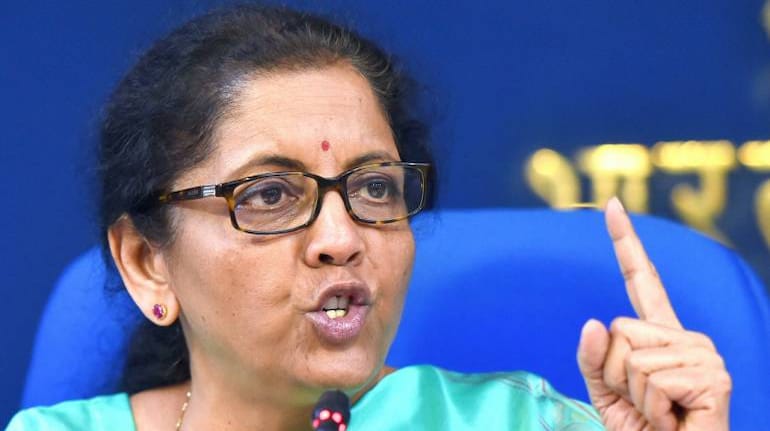



As part of the announcements made by Union Finance Minister Nirmala Sitharaman on May 17, all new Insolvency and Bankruptcy Code (IBC) proceedings will be suspended for a year.
Third, there will be a special set of insolvency framework for MSMEs (micro, small and medium enterprises).
Finally, the government has decided to increase the minimum threshold for IBC proceedings to Rs 1 crore from Rs 1 lakh. To begin with, any rule relaxation for industries hit by a disastrous pandemic is welcome. More so for MSMEs, who are even more vulnerable.
But, it is important to understand the larger systemic impact of these announcements. All the measures mentioned above are good news for companies, but will likely worsen the mess in the banking sector that is already under a bad debt crisis.
There are a few reasons here:
One, how does one bank decide whether a loan is defaulted due to COVID-19 or not?
To begin with, there are chances of rampant misuse of the definition of the ‘COVID-19 related debts’ by companies.
Almost the entire industry and smaller ones in particular (read MSMEs) have been affected by the novel coronavirus pandemic. But, it is important to remember that a good number of companies (again MSMEs) are in the stressed category (under special mention accounts for delayed payments) in the books of banks even before COVID-19 hit the economy.
Banks already have about Rs 29 lakh crore loan outstanding to MSMEs as at end March. Most banks have around 9-10 percent bad loans from this segment (a rough estimate). In fact, one reason why banks stopped lending to MSMEs in the last 12 months period is high stress from this segment. So, that being the case, almost entire chunk of stressed companies can now make a claim with banks for 'COVID-19 related debt’ tag so that they can avoid insolvency proceedings. This will happen regardless of the cut-off date government will announce to calculate quantum of COVID-related loans. Refusal by banks can lead to court disputes.
Two, if the COVID-19 related stress persists in the economy (which is what it looks like as of now), the banking system will essentially create a lot of zombies on their books. These companies will be defaulted accounts in reality but ‘standard’ on the paper due to government’s 'COVID-related debt' definition.
Neither can these firms be taken to IBC for liquidation, nor will they pay the money back to banks. How exactly are banks supposed to deal with these accounts? How long will the coronavirus crisis last is anyone’s guess. By promising to exclude COVID-19 related debt from insolvency, FM Sitharaman has done the mistake of creating unimaginable number of zombie accounts.
In other words, banks will have to carry a mountain of COVID-debts on their book excluded from ‘default’ category for a very long time till resolution happens or these loans are written off punching a hole in bank balance sheets. This will take the form of a ticking time-bomb in an already fragile banking sector.
Three, the Centre’s decision to suspend insolvency proceedings for a period of up to 12 months and exclude all COVID cases will deal a blow to the reform course on bad debt resolution.
While temporary relaxations in IBC proceedings are welcome, a blanket ban will be highly regressive in the context of banking sector reforms.
In the absence of IBC, banks have no way to implement resolution for stressed assets. The era of debt tribunals are over. IBC is the only saver for banks in extreme cases. The banking system is already dumped with Rs 8 lakh crore worth of non-performing assets (NPAs) and a suspected equal amount of stressed assets (delayed payments).
The very purpose of bringing in IBC was time-bound resolution of bad assets. Given the blanket ban, banks do not have any option for recovery if these loans go bad. “A binding framework of resolution outside of IBC has found very little success in the Indian market. Suspending IBC in entirety, while it looks like a relief to corporates, could actually lead to the corporates being in a state of flux, as all creditors coming together without the sword of IBC on them, has never really won the popularity vote,” said Veena Sivaramakrishnan, Partner, Shardul Amarchand Mangaldas & Co.
At the end of FM Sitharaman’s COVID-series pressers, the banking sector is left with holding the baby. Major chunk of the economic package is slated to be rolled out through the credit route. This includes a Rs 3 lakh crore loan collateral loan scheme for MSMEs, Rs 75,000 crore to NBFCs and MFIs, Rs 5,000 crore to street vendors and Rs 2 lakh crore concessional credit for farmers. Naturally, the burden of executing this package will fall on PSU banks and each bank will be given targets for disbursal.
In cases where there is no government guarantee, banks are likely to see a spike in their bad loan levels. Even for loans with government guarantee, the real recovery will be a prolonged process. FM Sitharaman has not made any announcements for recapitalisation of banks to strengthen their balance sheets to fight the pandemic's impact.
According to BofA Securities, government-owned banks’ NPAs could go up by 2-4 percent of the credit in the present economic environment. This, BofA says, will result in a recapitalisation requirement of $7-15 billion (Rs 1.14 lakh crore at the upper end). All this would means that banks are up for a major shock in the post-COVID world.
Discover the latest Business News, Sensex, and Nifty updates. Obtain Personal Finance insights, tax queries, and expert opinions on Moneycontrol or download the Moneycontrol App to stay updated!
Find the best of Al News in one place, specially curated for you every weekend.
Stay on top of the latest tech trends and biggest startup news.